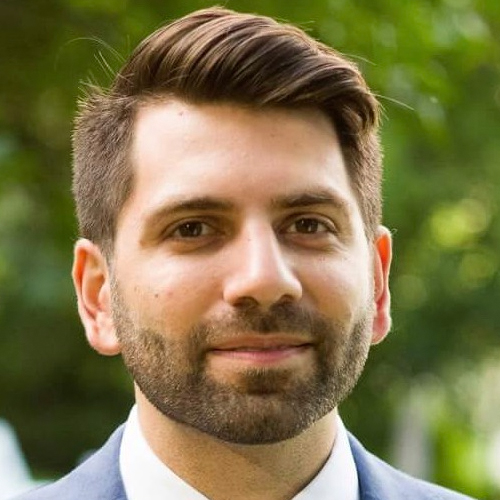
This Canada Day marks the 60th anniversary of the birth of medicare in Saskatchewan. And by the end of this year, we could have one of the most important additions to public health care since medicare’s founding if the federal government delivers on its promise to create a public dental program for low-income Canadians.
Implementing medicare was not easy. It took tremendous bravery from Tommy Douglas and others to oppose the resistance of physicians, who launched an expensive and organized campaign. When they failed to get Douglas’s provincial government to backtrack on its election promise to implement medicare, they turned to a different strategy: advocating for the government to subsidize existing medical insurance schemes.
Sixty years later, a similar playbook is being used by the Canadian Dental Association (CDA). It claims the new federal dental plan “could jeopardize access to dental care for millions of Canadians” in a newsletter that mirrors the anti-medicare propaganda of physicians in the 1960s. Rather than expand dental coverage to six million Canadians, it advocates that “the best way to quickly improve oral health and increase access to dental treatment for Canadians is to invest in existing programs at the provincial and territorial levels.”
In short, pay private dentists more for the same patients who are currently covered.
Unsurprisingly, the Canadian Life and Health Insurance Association sees the federal dental program as potentially biting into its market, and supports the CDA’s recommendations.
The federal government is still in planning mode despite having only six months to launch its program. It will require Douglas-level resolve for the federal government to stand up to pressure from dentists and insurers, avoid the path of least resistance and create a program that will be a step toward what is truly needed: universal, single-payer denticare.
People need public delivery not just more spending for dental care
The division between medical care and dental care is historical, not clinical. The founders of North America’s first dental school in the mid-19th century were rebuffed when they proposed to integrate dentistry as a subspecialty of medicine. The medical consensus of the time was that dentistry was a mere trade that required only mechanical skills.
But now we know that dental care is health care.
A 31-year-old Ottawa man’s terrifying ordeal illustrates the fact. In 2016, he almost died from a dental infection. What started as a simple toothache turned to sepsis as a dental infection spread to his bloodstream and overwhelmed his body. He ended up in the intensive care unit for a month and required multiple amputations, including below the right knee and several fingers and toes. He spent an entire year rehabilitating in a long-term care home.
Thankfully, not all delays in dental care result in such dramatic outcomes. But the evidence shows clear consequences of failing to provide oral health care. Tooth loss leads to depression, and poor oral health negatively impacts a person’s self-esteem, social interactions, and employability. Similarly, providing dental care improves people’s overall health. Treating gum disease in diabetics improves blood-sugar control similar to adding an additional oral diabetes medication, and providing oral care in long-term care reduces the risk of aspiration pneumonia.
Failing to provide dental care for all harms patients and further strains our health-care system.
Despite the connection between oral health and overall health, we fund dental care and medical care very differently. Almost all physician spending (more than 98 per cent) is funded publicly, compared with only six per cent of dental services. Medical care is provided based on need, but dental care is based on one’s ability to pay – with more than one in five people avoiding dental care each year due to financial barriers.
We can see obvious inequities resulting from our multi-payer dental system compared with our single-payer medicare system. Approximately 42 per cent of low-income Canadians avoid necessary dental care due to cost compared with only 15 per cent of high-income Canadians. Meanwhile, for physician services, only nine per cent of low-income Canadians and three per cent of high-income Canadians avoid seeing a physician due to cost.
A drug, dental and mental health plan for uninsured Canadians
Medicare certainly has challenges and is facing pressure from the pandemic like every health-care system in the world. But the most effective and equitable solutions lie in strengthening public health care: investing in prevention, co-ordinating public resources to match need and demand, investing in home care and long-term care to reduce the strain on acute-care facilities, and investing in primary care and team-based care.
The distinction between medical care and dental care was arbitrary to begin with. For the same reasons that make medicare the most effective and equitable system to provide medical care to Canadians, a single-payer dental-care system is the most effective and equitable system to provide dental care to Canadians.
How can the federal government achieve that ambitious goal?
By planning for the long-term viability of its new dental program and considering the following principles:
- Defining the medically necessary basket of services based on the evidence and in consultation with Canadians and dental providers.
- Transitioning to a provincial transfer: the ambitious timeline necessitates a federal insurance program. But if dental care is health care, it should eventually be transitioned to the provinces via federal transfers that come with similar expectations as Canada Health Transfers.
- Transitioning to being the primary payer: even if the program starts as the payer of last resort, it should transition to being the primary payer of medically necessary dental services. If dental care is health care, patients and providers shouldn’t have to go back and forth between insurance companies and the government.
We must not forget that doctors were the biggest opponents of medicare, going on strike for 23 days when medicare was first introduced in Saskatchewan. Now very few physicians in Canada could imagine working in a system where access was dependent on the ability to pay, especially after seeing the pandemic disproportionately affect already marginalized communities.
Tommy Douglas worked tirelessly to prevent medicare from being watered down, and the federal government is starting with an already diluted dental care commitment. It must concentrate, show courage, and ensure that its plan brings dental care out of the 19th century and into the 21st, stepping toward a truly universal, single-payer system.












